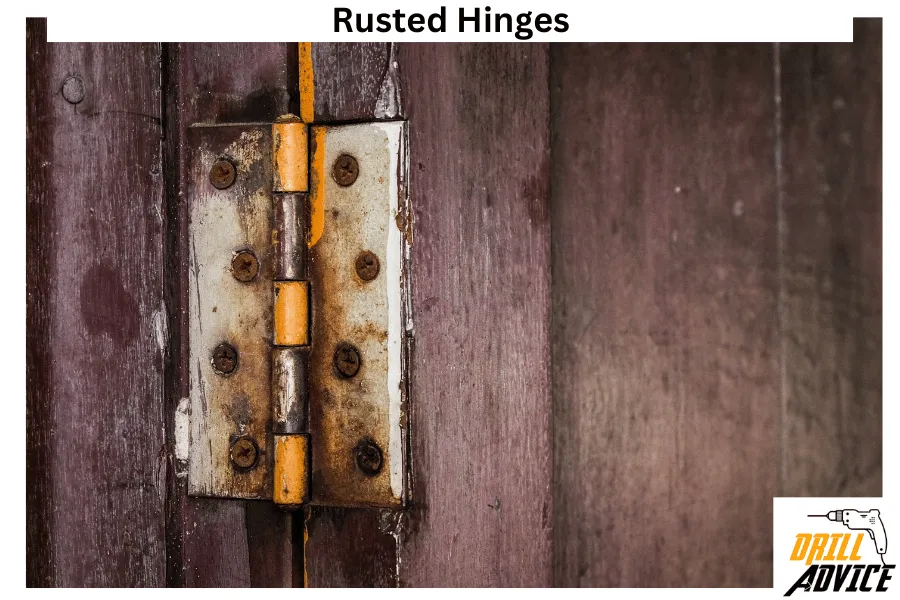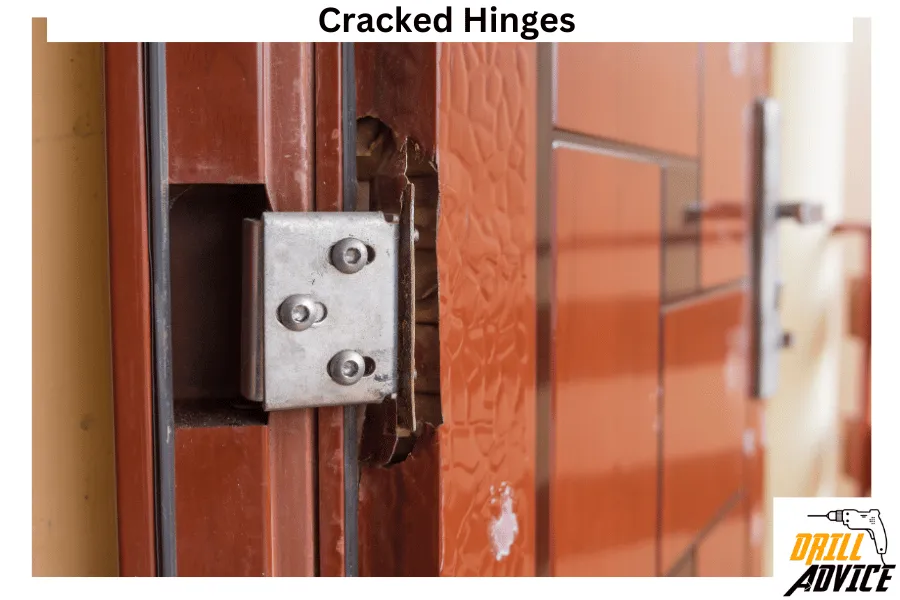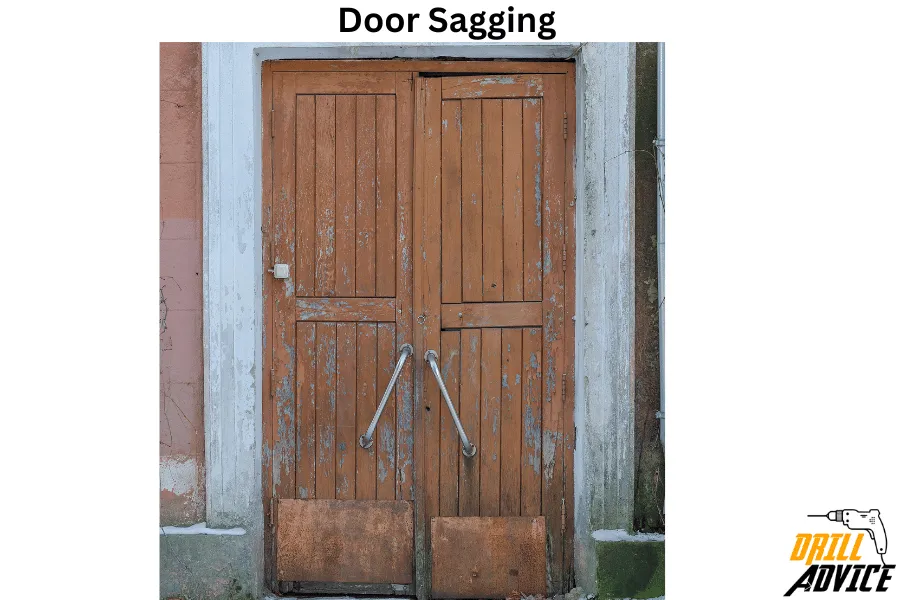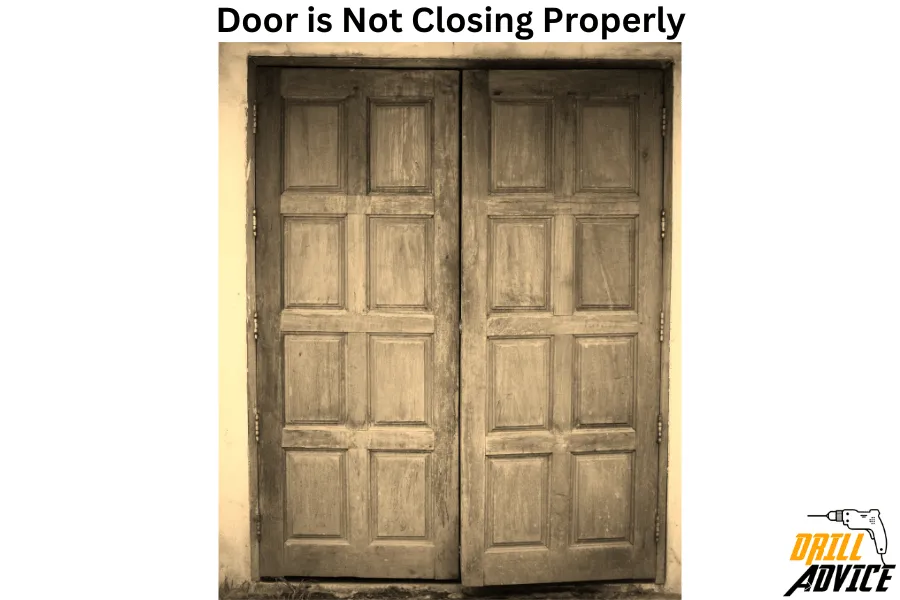
A door hinge is an equipment that is used to attach the door to the door frame. The door hinge has to hold the weight of the door and function it open and close. Due to this functionality and common usage, hinges can have these problems. The 9 common door hinge problems are squeaking hinges, rusted hinges, cracked hinges, door sagging, the door is not closing properly, door sticking, free door swing, the door is difficult to move and stripped screw hole.
Each of these problems has a specific reason. The most common reasons for door hinge problems are lack of lubrication, grit and dirt accumulation, misalignment of the hinges, wear and tear of the hinges, rusting, and wrong installation of the hinges.
You can solve and avoid these common hinge problems by regular hinge lubricating, cleaning the hinges, installing the hinges with proper alignments, applying anticorrosion layers on the hinge, and using quality hinges every time.
What are the 9 Common Door Hinge Problems?
The common hinge problems are;
- Squeaking Hinges
- Rusted Hinges
- Cracked Hinges
- Door Sagging
- Door is Not Closing Properly
- Door Sticking
- Free Door Swing
- Door is Difficult to Move
- Stripped Screw Hole
Read More About – 11 Types of Doors: Usage, Maintenance, Pros and Cons
1. Squeaking Hinges

Squeaking hinges are a common door issue where the hinges emit a high-pitched noise when the door is opened or closed. This problem often arises due to wear and tear, lack of lubrication, or the accumulation of dirt and grime in the hinge pins.
Reasons for the squeaking hinges
- Lack of lubrication on the hinge
- Accumulation of dirt and grime on the hinge
- Misaligned hinges: rust and corrosion hinges
- Wear and tear hinges
Solutions for the squeaking hinges
- Regularly lubricate the hinges with a suitable material such as WD-40 or a silicone-based lubricant to reduce friction and prevent squeaking.
- Periodically clean the hinges to remove dirt and grime that can cause squeaking. Use a mild cleaner and a soft brush or cloth for this.
- Ensure that the hinges are properly aligned to prevent uneven wear and tear, which can lead to squeaking.
- Consider to replace the hinges with new ones if the hinge is too much rust, corrosion, or wear and tear.
2. Rusted Hinges

Rusted hinges are a common door problem where the hinges have developed rust due to exposure to moisture over time. This can decrease the smooth operation of the door and can even compromise its structural integrity.
Reasons for Hinge Rusting
- Hinges can rust due to prolonged exposure to moisture or high-humidity environments.
- Using poor-quality hinge material.
- Lack of hinge maintenance.
Solutions for Hinge Rusting
- Regularly clean the hinges to remove dirt and moisture that can cause rust.
- Apply anti-rust paint on the hinges.
- Lubricate the hinges to protect them from rust and ensure smooth operation.
- Replace the hinges with new ones made of rust-resistant material.
- Protect the hinges from water and moisture.
3. Cracked Hinges

Cracked hinges are the fractures or splits in the hinge material which compromise the door stability and functionality.
Reasons for Cracked Hinges
- Material fatigue: Hinges can fail due to material fatigue when it is used continuously.
- Excessive weight: Bearing weight beyond the hinge’s capacity can cause cracks.
- Inferior quality material: Low-quality hinge material can increase the cracks.
- Impact damage: Physical impacts or accidents can lead to cracked hinges.
Solutions for Cracked Hinges
- Replace old or inferior hinges with higher-quality material products.
- Ensure hinges are installed correctly, with an even distribution of weight to avoid cracks.
- Conduct regular inspections to identify early signs of cracks and address them promptly.
- Consider installing additional hinges or using a lighter door to prevent cracks.
4. Door Sagging

Door sagging is a common issue characterized by the door hanging lower than it should. This mainly occurs due to problems associated with the hinges holding the door.
Reasons for door Sagging
- Hinges can wear when it is used continuously. Hence, it causes the door to sag.
- Loose hinge screws can result to door sagging.
- Using a lesser number of hinges than required for the door’s weight can lead to sagging.
- Using poor-quality material hinges can cause to door sag.
- Hinges that have not been installed correctly can lead to sagging as they may not be able to bear the door’s weight evenly.
Solutions for door sagging
- Tighten loose screws on the hinge.
- Replace worn-out or inferior-quality hinges with new, high-quality ones.
- Install additional hinges to better distribute the door’s weight and prevent sagging.
- Install hinges correctly and evenly to avoid future sagging.
5. Door is Not Closing Properly

The door will not close properly due to various hinge-related issues such as misalignment, wear and tear, or structural changes to the door or frame.
Reasons for Door not Closing properly
- Hinge misalignment
- Loose hinge screws
- Warped due to environmental factors.
- Settling of house
- Obstruction in the door path
Solutions for Door not Closing properly
- Adjust the hinges: Realign the hinges to ensure that they are evenly aligned, facilitating a proper door closure.
- Tighten loose screws.
- Sand or plane the affected areas
6. Door Sticking

Door sticking is the issue where the door does not open or close smoothly and tends to stick at certain points, making it difficult to operate it without applying extra force. Door sticking is occure due to hinge problems.
Reasons for Door Sticking
- Misaligned hinges will not distribute the door weight properly. Hence it will stick the door.
- Changes in humidity can cause the wood to swell and affect the hinge functionality.
- Paint build-up on or around the hinges can lead to sticking issues.
- Worn-out hinges can affect the door sticking.
- Loose screws in the hinges can cause the door to hang unevenly, leading to sticking.
Solutions for Door Sticking
- Realign hinges – Adjust the hinges to ensure they are aligned properly, which can prevent the door from sticking.
- Replace worn-out hinges – Replace the worn-out hinges with new ones to avoid the door sticking.
- Address humidity issues – Control humidity levels to prevent the wood from swelling and causing hinge problems.
- Remove paint build-up – Clean and remove excessive paint build-up around the hinges to ensure smooth operation.
- Tighten screws – Tighten any loose screws in the hinges to prevent the door from hanging unevenly and sticking.
7. Free Door Swing

This problem occurs when a door does not stay in the desired open or closed position. This occurs due to hinge issues or imbalances in the door installation.
Reasons for Free Door Swing
- Hinge misalignment: Incorrectly installed or shifted hinges can create an imbalance in the door to swing open or close.
- Worn-out hinges – Hinges can wear down with time. Hence, hinges can’t keep the door in a steady position.
- Uneven floor or frame
- Improperly installed door
Solutions for Free Door Swing
- Adjust hinges – Correct the hinge alignment to ensure that the door stays in the desired position without swinging.
- Replace worn hinges – If the hinges are worn out, replace them with new, well-fitted ones to maintain the door’s position.
- Correct the floor or frame level.
- Install door stopper
8. Door is Difficult to Move

Door can be moved difficult due to the tight hinge movement. Hinge movement can be tight due to rusting, misalignment, lack of lubrication, and damaged of bent hinges.
Reasons for Difficult Door Movements
- Hinge misalignment – Incorrect alignment of hinges can improve friction; hence door is difficult to move.
- Lack of hinge lubrication – Insufficient lubrication can cause increased resistance in hinge movement.
- Damaged or bent hinges – Hinges that are bent or damaged can decrease the door’s ability to move freely.
- Hinge rusting and corrosion
Solutions for Difficult Door Movements
- Realignment the door – Adjust the hinges to ensure proper alignment and smoother door movement.
- Lubricate the hinges – Regularly lubricate the hinges to reduce friction and make the door easier to move.
- Replace damaged hinges – If hinges are bent or damaged, replace them to restore ease of door movement.
9. Stripped Screw Hole

A stripped screw hole occurs when the threads in the hinge hole screw are worn or damaged due to over-tightening, using an incorrect screw size, or repeatedly removing and inserting a screw in the same hole. It prevents the screw from holding tightly or fitting correctly.
Reasons for Stripped Screw Hole
- Applying too much torque when tightening screws can strip the threads in the hinge screw hole.
- Frequent use of screw holes.
- Improper screw size – Using screws that are too large or too small for the designated holes can cause stripping.
- Material quality – Poor quality material of the door or frame can be more susceptible to screw hole stripping.
- Repeated installation and removal of screws can wear down the threads and it leads to stripping.
Solutions for Stripped Screw Hole
- Use larger screws
- Use hole fillers
- Insert metal threads
- Use proper tool sizes.
- Professional repair
How to Maintenance a Door Hinge Properly?
- Do Regular Inspection: Frequently check the hinges for signs of wear, rust, or damage.
- Lubricate the Hinge: Apply a suitable lubricant to the hinges periodically to facilitate smooth operation and prevent squeaking.
- Cleaning the Hinge: Clean the hinges regularly to remove dust and grime that can cause friction and wear.
- Tightening the Hinge Screws: Ensure that the hinges screws are tight and secure to prevent sagging or misalignment of the door.
- Apply Anti-Corrosion Treatment: Apply anti-corrosion sprays or paints on the hinges to prevent rusting in humid environments.
- Check Hinge Alignments: Periodically check the alignment of the door and hinges to ensure smooth operation and make adjustments as necessary.
- Replacement: Replace hinges that show signs of severe wear or damage to prevent further door issues.
The door hinge problems can occur on any of these 16 types of door hinges.
What Parts of Door Should You Maintenance Frequently?
You should maintain these parts of the door frequently in order to prevent door problems.
- Door locks
- Door Frame
- Weather Stripping
- Door Knobs and Handles
- Door Surface
- Glass Panels
- Threshold
- Seals
- Rollers and Tracks (for sliding doors)
